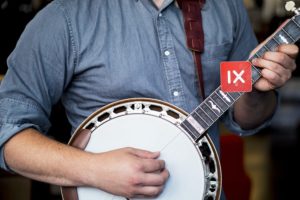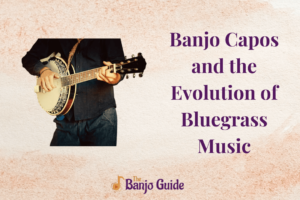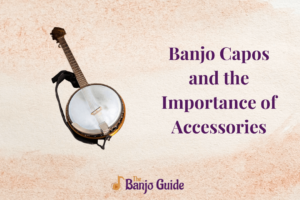Banjo is a popular musical instrument. It is originated in Africa, but it got popular in the United States in the 19th Century. Then it gets exported to Europe. Several African-origin musical instruments are having similar names like a banjo for ex- banjo, bunia, etc. This article contains the information about anatomy of a banjo.
The banjo consists of a circular-shaped membrane made up of leather, animal skin, or plastic. Also, a long string is stretched over the frame for the formation of a resonator. Generally, the banjo is used for various musical forms such as folk music, rock music, etc. There are many rock bands worldwide that use five-string banjo for their musical concerts. Earlier, the banjo was used for traditional music before entering the mainstream in the 19th Century. The structure of a five-string banjo leads to a question that “ what is the anatomy of a banjo ?”
Anatomy Of A Five String Banjo
Anatomy of a banjo seems a simple musical instrument from the outside, but its anatomy is much complicated from the inside. Anatomy of a banjo consists of several different parts and has a complex design.
We can categorize the structure of the anatomy of a banjo into two parts- the circular pot and the neck part. Both parts contain several components. Further, the neck part can be divided into three sections-
- Head Stock– The headstock part is also known as Peghead. The headstock is a part of the neck, and it contains the tuners.
- Body– The body is also a part of the neck, where you play the banjo. The body carries a truss rod where you can find spikes, springs, and other components.
- Heels– The heels hold the hanger bolts that connect the pot to the neck.
The pot part of the best banjo contains a variety of components. They are mentioned below
- Rim– It is responsible for producing the sound in the banjo.
- Banjo head– It is made up of Mylar
- Tension hoop– It maintains the tension in the banjo.
- Banjo bridge– The height of the heel cut should match the bridge.
- Coordinator rods– It keeps the rim fixed.
- Tone ring– It adds dimensions and volume.
- Tailpiece– Maintains the tension in strings.
- Flange– Helps to connect the resonator
- Resonator– Used to increase the banjo’s volume.
- Hooks– Maintains the position of the tension hoop.
- Armrest– Helps to play the banjo.
Frequently Asked Questions
1. What are the parts of a banjo called?
There are several parts of a banjo. Those are Frets, Pot assembly, Banjo rim, Banjo head, Tailpiece, Stretcher band, Resonator, Coordinator rods, Tuning machines, Truss rods, resonator, armrest, bridge, etc.
2. What gives the banjo its characteristic sound?
The thin head of the banjo is responsible for creating the snappy and poppy sound in the banjo. The circular-shaped membrane is connected with strings and bridges and responds easily and quickly because it is sensitive. Therefore, a gentle touch from a finger can make a delicate and melodious musical sound.
Also, check out our posts on Everything about Banjo Rolls to know more.

I own a music instruments shop. My go to instrument is a banjo. My business makes it easier for me to access the instruments from various brands and of various types. I will give my honest opinion here to help out others in choosing the right instrument for them.





